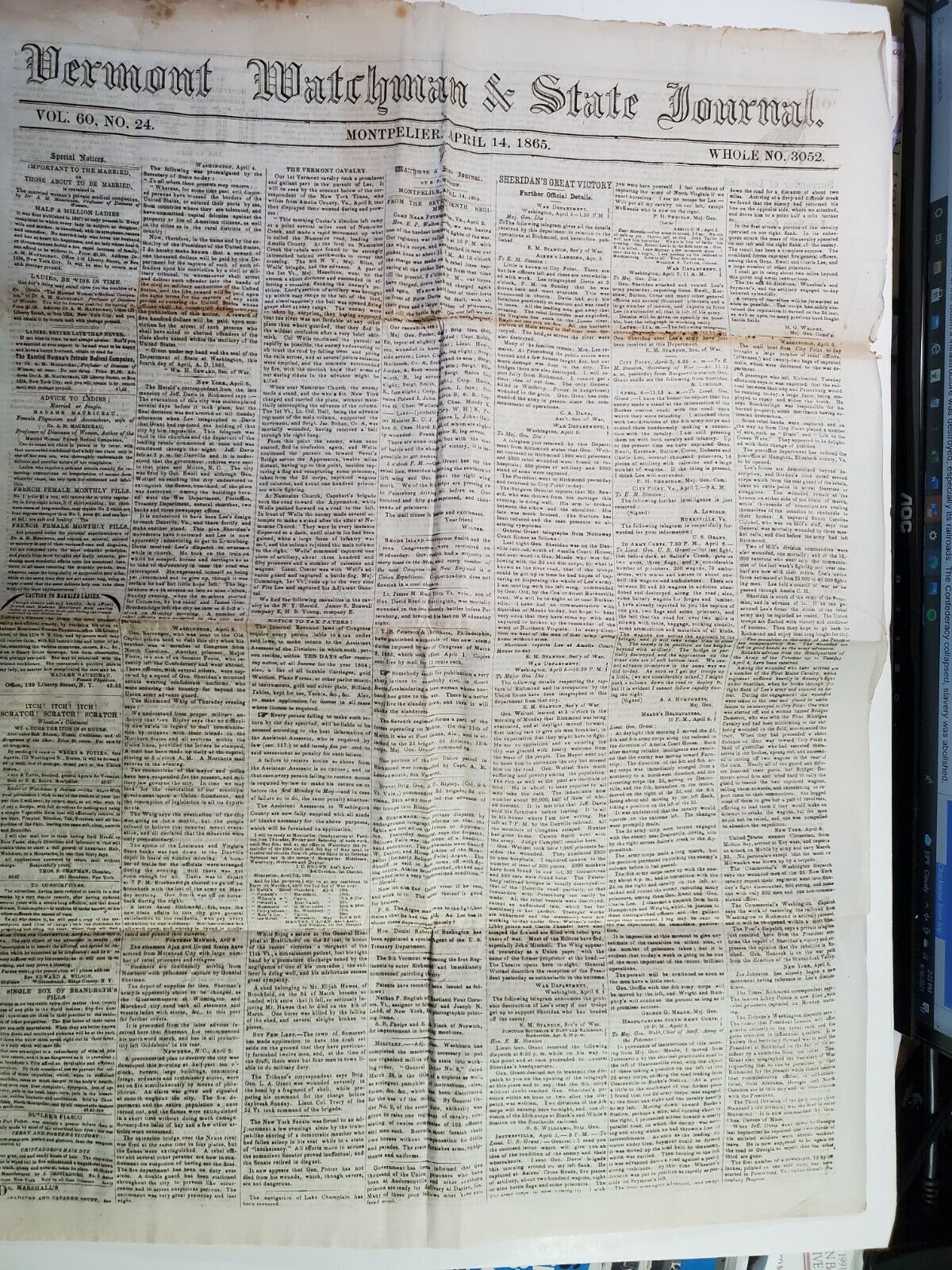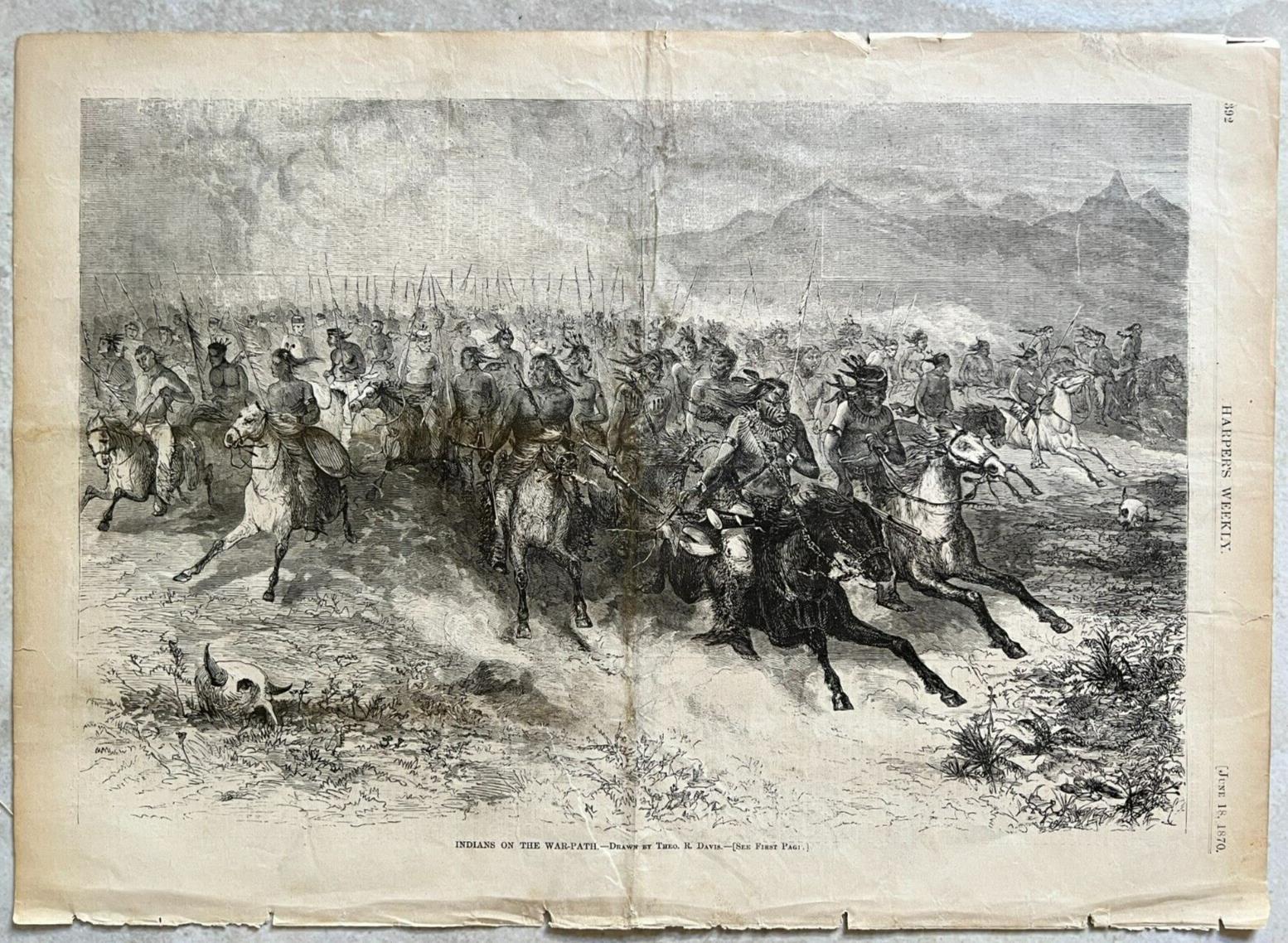-40%
1876 "The Graphic" - Karns City - War in Serbia - Christmas in Canada & Normandy
$ 7.91
- Description
- Size Guide
Description
An original edition of "The Graphic" illustrated weekly newspaper dated December 30, 1876. This popular London magazine was published from 1869 until 1932 and had a significant influence on the art world through its fine illustrations - see history belowThe illustrations, many by special artists sent to areas of war, are as follows:
"Ambulance Train in a Mountain Pass near Luvoka" - cover page - British Red Cross
"Russian Soldiers on their way to the Front"
"Bracebridge Hall by Washington Irving"
"Black Spirits and White" - weekly serial
"Little Pepita"
"Christmas in Canada - Amateur Carol Singing at Longueuil ..."
"Mistletoe Gathering in Normandy"
"Street in Karns City" - see below
"Sketches at Philippopolis and Perustitza"
All of the illustrations are explained in the text. Good condition - double pages have binding holes - two loose pages and two missing pages - see scans . The magazine has been bound and disbound
10 pages, 20 sides . Page size 12 x 16 inches. A great and interesting resource for the historian
Karns City, Pennsylvania
20 languages
Article
Talk
Read
Edit
View history
Tools
Coordinates
:
40°59′42″N
79°43′33″W
From Wikipedia, the free encyclopedia
For other uses, see
Karns (disambiguation)
.
Karns City, Pennsylvania
Borough
Calumet Penreco oil refinery on
Petrolia Street
Location of Karns City in Butler County, Pennsylvania.
Karns City
Coordinates:
40°59′42″N
79°43′33″W
Country
United States
State
Pennsylvania
County
Butler
Settled
1874
Incorporated
1875
Government
• Type
Borough Council
Area
[1]
• Total
0.36 sq mi (0.94 km
2
)
• Land
0.36 sq mi (0.94 km
2
)
• Water
0.00 sq mi (0.00 km
2
)
Population
(
2020
)
[2]
• Total
175
• Density
482.09/sq mi (186.32/km
2
)
Time zone
UTC-5
(
Eastern (EST)
)
• Summer (
DST
)
UTC-4
(EDT)
Zip code
16041
FIPS
code
42-38768
Karns City
is a
borough
that is located in
Butler County, Pennsylvania
, United States. The population was 209 at the time of the 2010 census.
[3]
[4]
History
In December 1871, Hugh P. McClymonds and Samuel L. Riddle leased fifteen acres of land to two brothers from the Cooper family. Initially slated to be used as farmland, those plans changed when a reserve of oil was discovered on the land. The first oil well, known as "Shasta," was established shortly thereafter near the western line of MyClymonds' two hundred and fourteen-acre farm.
[5]
On May 29, 1872, S. D. Karns obtained a lease for McClymonds' entire farm with the hope of increasing the well's capacity and profitability. Oil, at that time, was priced at four dollars per barrel. By June, Karns' well was extracting one hundred and twenty barrels of oil from the ground daily. As more speculators became interested in McClymonds' property, however, discord arose between competitors; in response, McClymonds sold the entire property, with the except of its farm buildings and fourteen acres of surface land, for ,000 on June 18 of that same year to Karns, O. G. Emery, John H. Haines, William Parker, and William Thompson. Additional
derricks
and supporting buildings were quickly erected and oil extraction ramped up even further.
[5]
In short order, the few buildings grew to several and then many, with entrepreneurs adding hotels, livery stables, machine shops, residences, and restaurants to turn the small, rural village into a booming town that soon became known as Karns City. In 1872, Ralston McQuaide & Co. opened a banking office that operated until 1880.
[6]
The borough of Karns City, which included all of McClymonds' land and roughly ten acres owned by Riddle, was subsequently incorporated on January 4, 1875.
[6]
Front page of
The Graphic
during the
Tichborne case
in 1873
The Graphic
was a British weekly illustrated newspaper, first published on 4 December 1869 by
William Luson Thomas
's company Illustrated Newspapers Ltd. Thomas's brother
Lewis Samuel Thomas
was a co-founder. The premature death of the latter in 1872 "as one of the founders of this newspaper, [and who] took an active interest in its management" left a marked gap in the early history of the publication.
[1]
It was set up as a rival to the popular
Illustrated London News
.
The influence of
The Graphic
within the art world was immense, its many admirers included
Vincent van Gogh
, and
Hubert von Herkomer
.
[2]
It continued to be published weekly under this title until 23 April 1932 and then changed title to
The National Graphic
between 28 April and 14 July 1932; it then ceased publication, after 3,266 issues. From 1890 until 1926, Luson Thomas's company, H. R. Baines & Co., published
The Daily Graphic
.
Background
[
edit
]
An illustration from the newspaper from 1884
The Graphic
was founded by
William Luson Thomas
, a successful artist, wood-engraver and social reformer. Earlier he, his brother and his brother-in-law had been persuaded to go to New York and assist in launching two newspapers,
Picture Gallery
and
Republic
. Thomas also had an engraving establishment of his own and, aided by a large staff, illustrated and engraved numerous standard works.
[3]
Exasperated, even angered, by the unsympathetic treatment of artists by the world's most successful illustrated paper,
The Illustrated London News
, and having a good business sense Luson Thomas resolved to set up an opposition. His illustrated paper, despite being more expensive than its competition, became an immediate success.
[2]
Realisation
[
edit
]
When it began in 1869, the newspaper was printed in a rented house. By 1882, the company owned three buildings and twenty printing presses, and employed more than 1,000 people. The first editor was
Henry Sutherland Edwards
. A successful artist himself, the founder Thomas recruited gifted artists including
Luke Fildes
,
Hubert von Herkomer
,
Frank Holl
, and
John Everett Millais
.
The Graphic
was published on a Saturday and its original cover price was
sixpence
, while the
Illustrated London News
was fivepence.
[2]
In its first year, it described itself to advertisers as "a superior illustrated weekly newspaper, containing twenty-four pages imperial
folio
, printed on fine toned paper of beautiful quality, made expressly for the purpose and admirably adapted for the display of
engravings
".
In addition to its home market the paper had subscribers all around the
British Empire
and North America.
The Graphic
covered home news and news from around the Empire, and devoted much attention to literature, arts, sciences, the fashionable world, sport, music and opera. Royal occasions and national celebrations and ceremonials were also given prominent coverage.
Artists
[
edit
]
Artists employed on
The Graphic
and
The Daily Graphic
at the end of the 19th century and beginning of the 20th century included
Helen Allingham
,
Edmund Blampied
,
Alexander Boyd
,
Frank Brangwyn
,
Randolph Caldecott
,
Lance Calkin
Léon Daviel
,
John Charles Dollman
,
James H. Dowd
,
Godefroy Durand
,
Luke Fildes
,
Harry Furniss
,
John Percival Gülich
,
George du Maurier
,
Phil May
,
George Percy Jacomb-Hood
,
Ernest Prater
,
Leonard Raven-Hill
,
Sidney Sime
,
Snaffles (Charles Johnson Payne)
,
George Stampa
,
Edmund Sullivan
,
Bert Thomas
,
F. H. Townsend
,
Harrison Weir
, and
Henry Woods
.
The notable illustrator
Henry William Brewer
, contributed a regular illustrated article on architecture to the magazine for 25 years, until his death in 1903.
[4]
[5]
Writers
[
edit
]
Writers for the paper included
George Eliot
,
Thomas Hardy
,
H. Rider Haggard
and
Anthony Trollope
.
[6]
Malcolm Charles Salaman
was employed there from 1890 to 1899.
Beatrice Grimshaw
travelled the South Pacific reporting on her experiences for the
Daily Graphic
.
[7]
Mary Frances Billington
served the
Graphic
as a special correspondent from 1890 to 1897, reporting from India in essays that were compiled into
Woman in India
(1895).
[8]
Joseph Ashby-Sterry
wrote the Bystander column for the paper for 18 years.
a series on

















